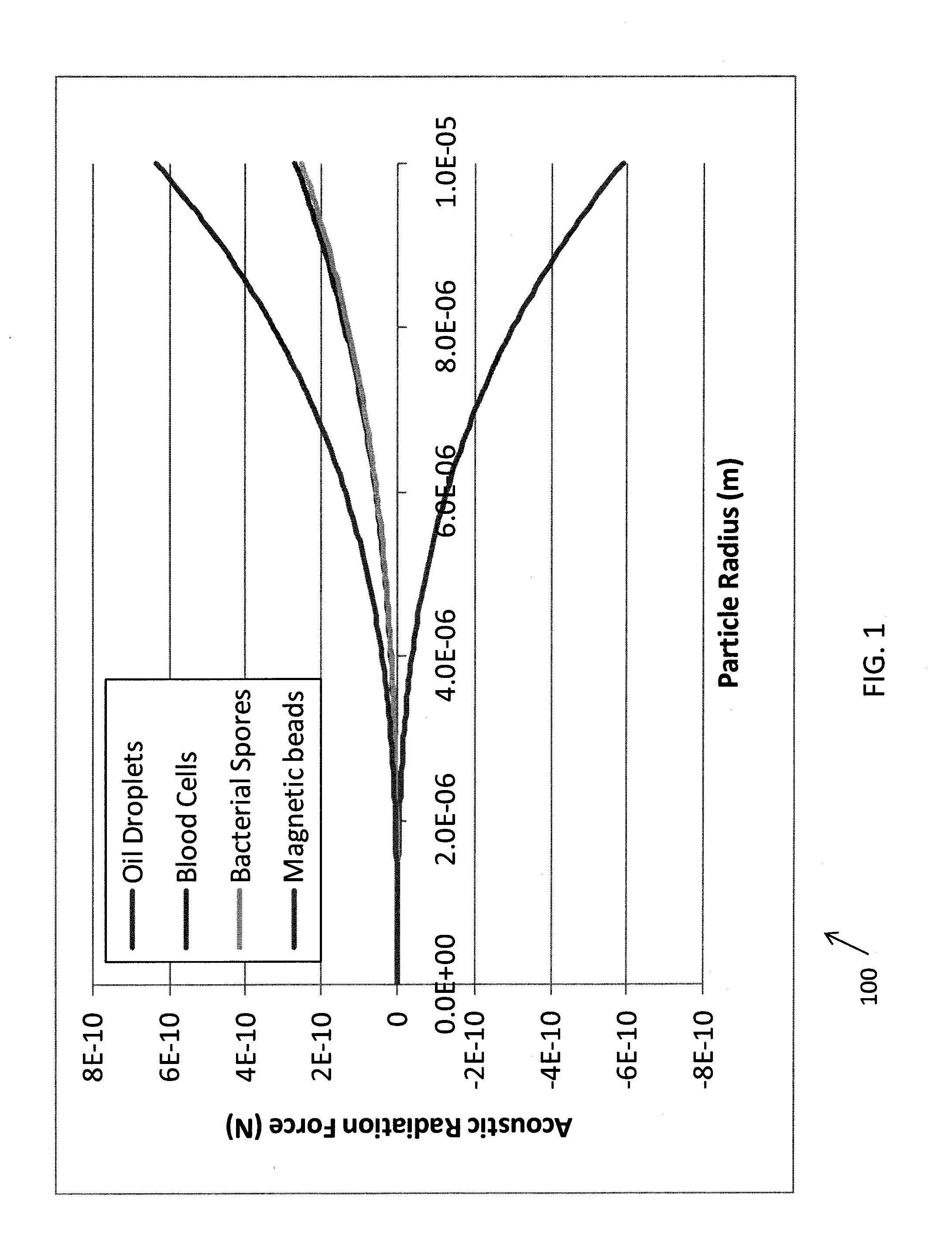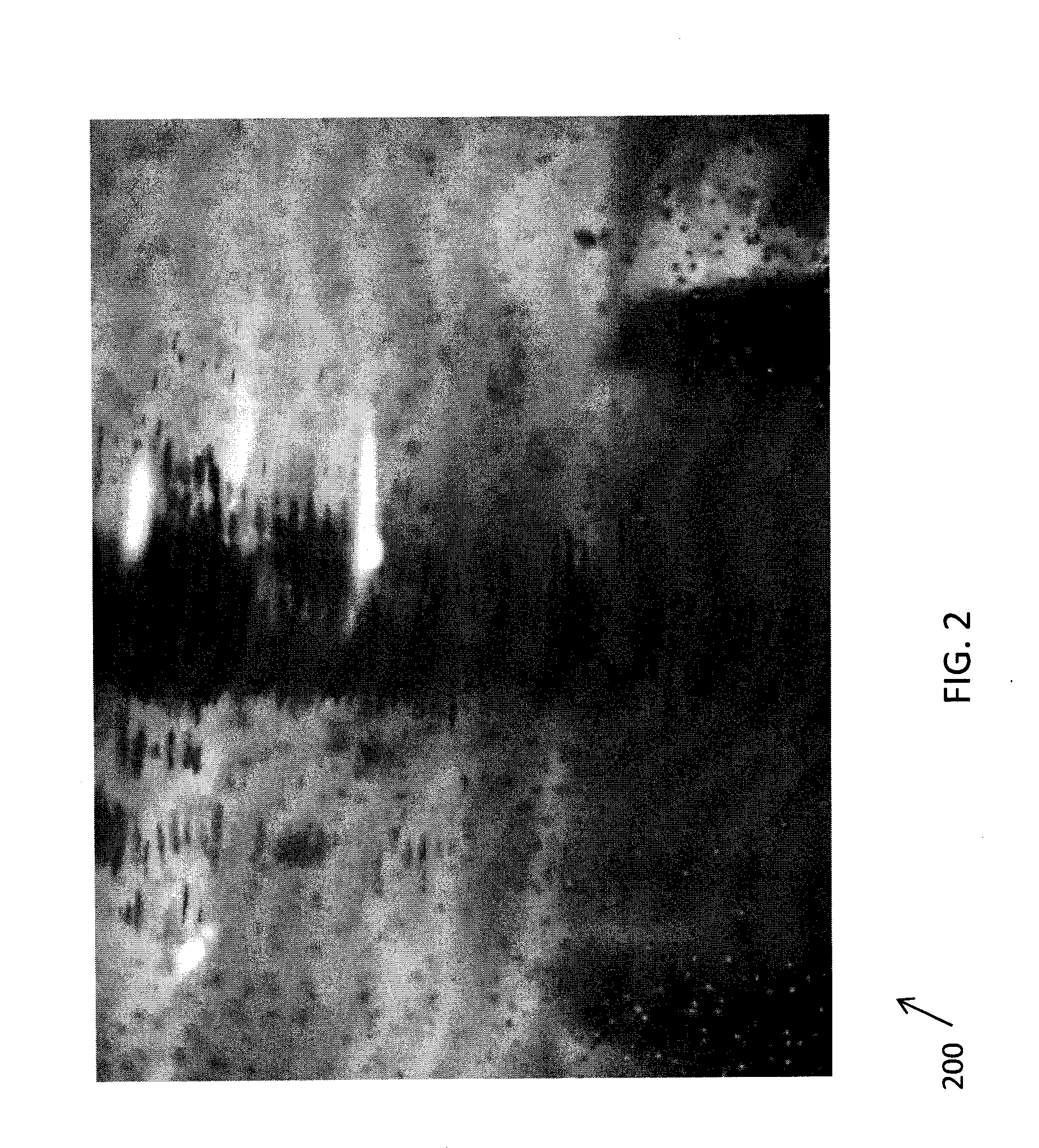Ultrasound and acoustophoresis for collection and processing of oleaginous microorganisms
a technology of oleaginous microorganisms and ultrasound, which is applied in the field of ultrasound and acoustophoresis for collection and processing of oleaginous microorganisms, can solve the problems of small effort spent on the harvesting of microorganisms and significant challenges remain
- Summary
- Abstract
- Description
- Claims
- Application Information
AI Technical Summary
Benefits of technology
Problems solved by technology
Method used
Image
Examples
Embodiment Construction
[0035]The current subject matter utilizes acoustophoresis, a low-power, no-pressure-drop, no-clog solid-state approach to particle removal from fluid dispersions: i.e., it is used to achieve separations that are more typically performed with porous filters and centrifuges, but it has none of the disadvantages of these systems. For example, the diagram 100 of FIG. 1 shows the forces for an applied acoustic frequency of 1 MHz (typical for an ultrasonic transducer) and an acoustic pressure of 0.5 MPa maximum at the antinodes (readily achieved in water). Achievement of higher applied acoustic frequencies and higher acoustic pressures will require better impedance matching. Examples of acoustic filters utilizing acoustophoresis can be found in commonly owned U.S. patent application Ser. Nos. 12 / 947,757, 61 / 261,686, 13 / 085,299 and 61 / 342,307, the contents of all of these applications are hereby fully incorporated by reference.
[0036]The acoustic radiation force (Fac) acts on the secondary-...
PUM
| Property | Measurement | Unit |
|---|---|---|
| frequency | aaaaa | aaaaa |
| time | aaaaa | aaaaa |
| volume | aaaaa | aaaaa |
Abstract
Description
Claims
Application Information
 Login to View More
Login to View More - R&D
- Intellectual Property
- Life Sciences
- Materials
- Tech Scout
- Unparalleled Data Quality
- Higher Quality Content
- 60% Fewer Hallucinations
Browse by: Latest US Patents, China's latest patents, Technical Efficacy Thesaurus, Application Domain, Technology Topic, Popular Technical Reports.
© 2025 PatSnap. All rights reserved.Legal|Privacy policy|Modern Slavery Act Transparency Statement|Sitemap|About US| Contact US: help@patsnap.com



